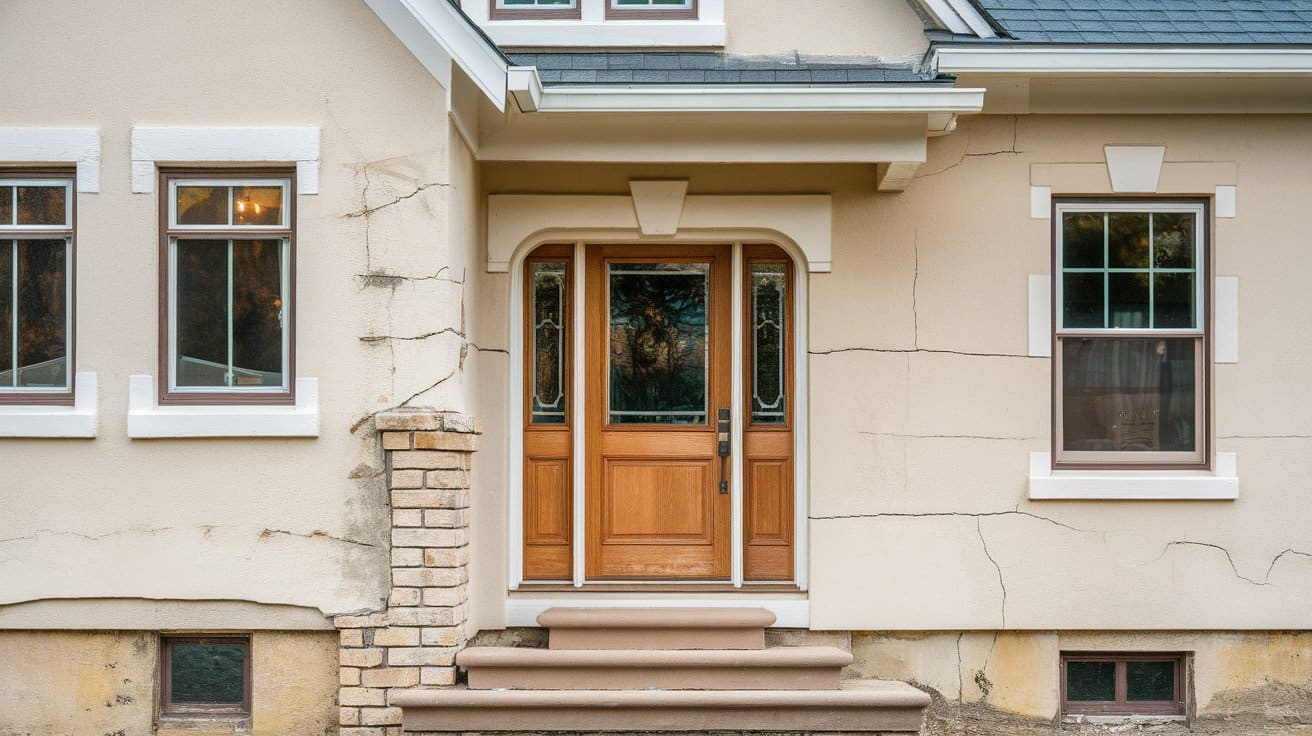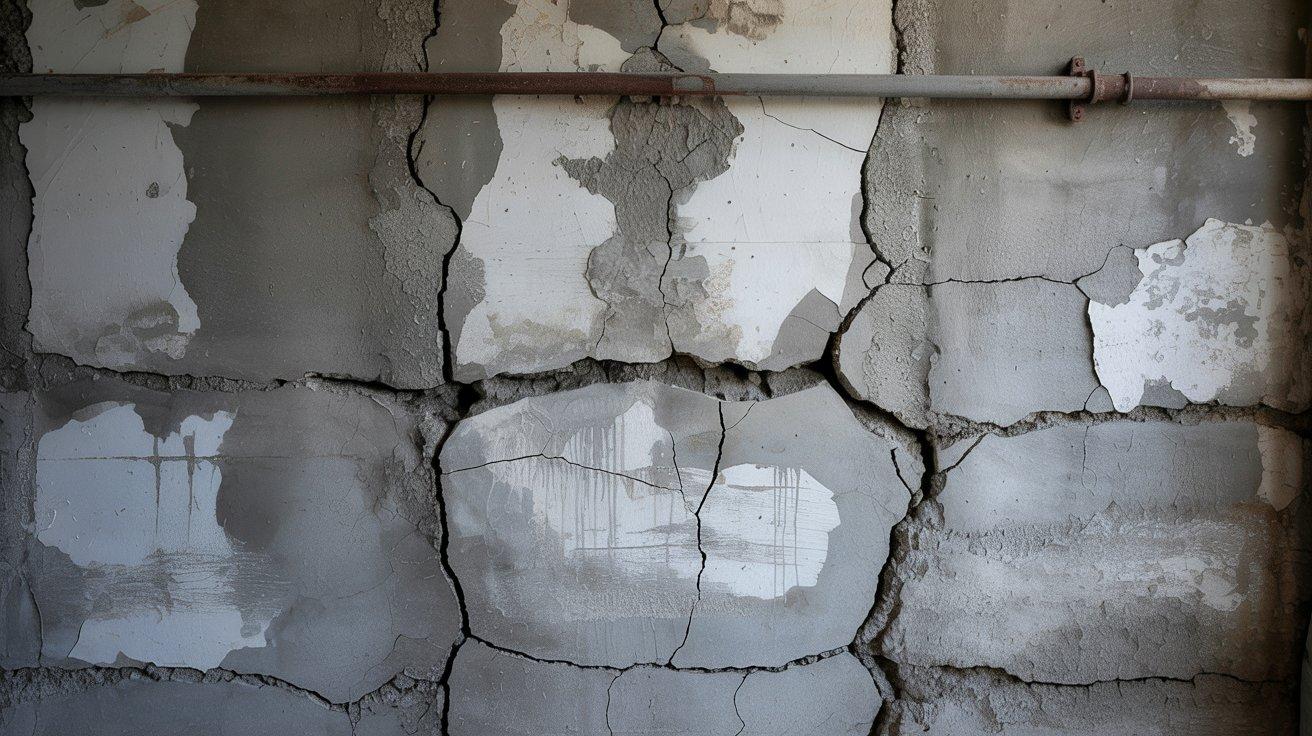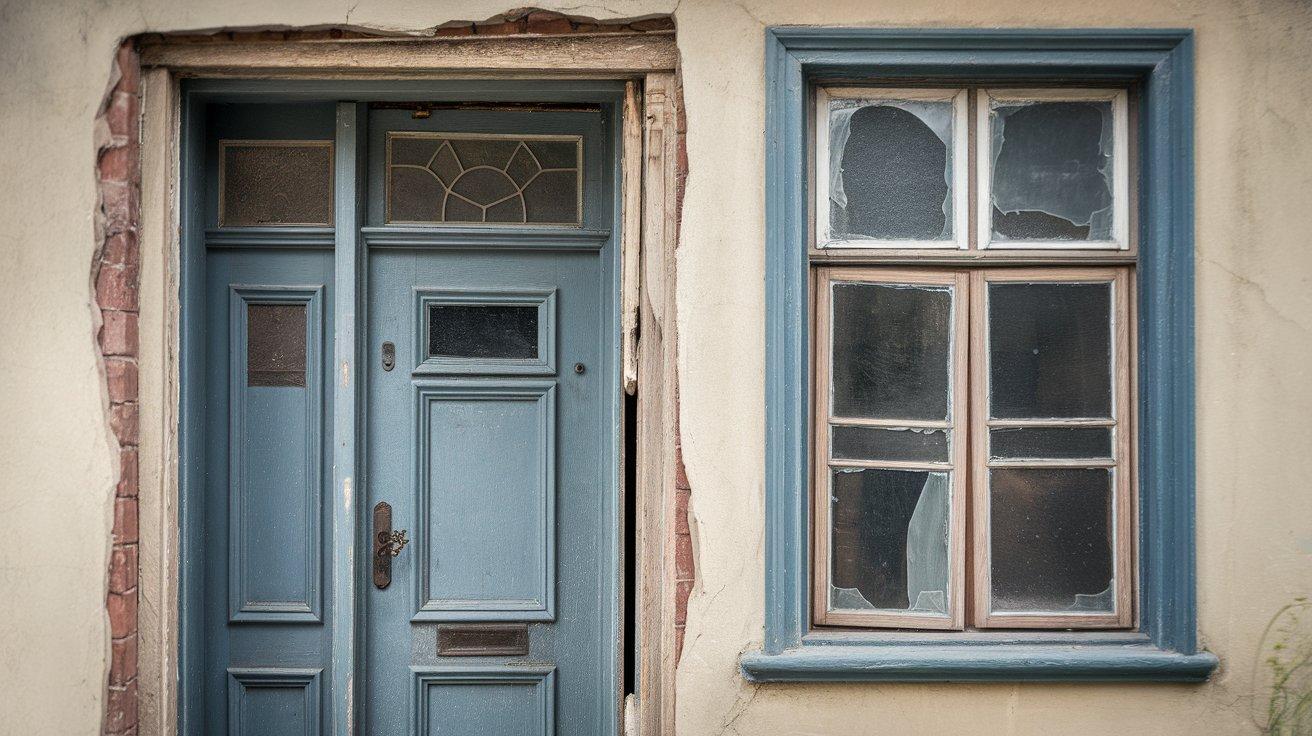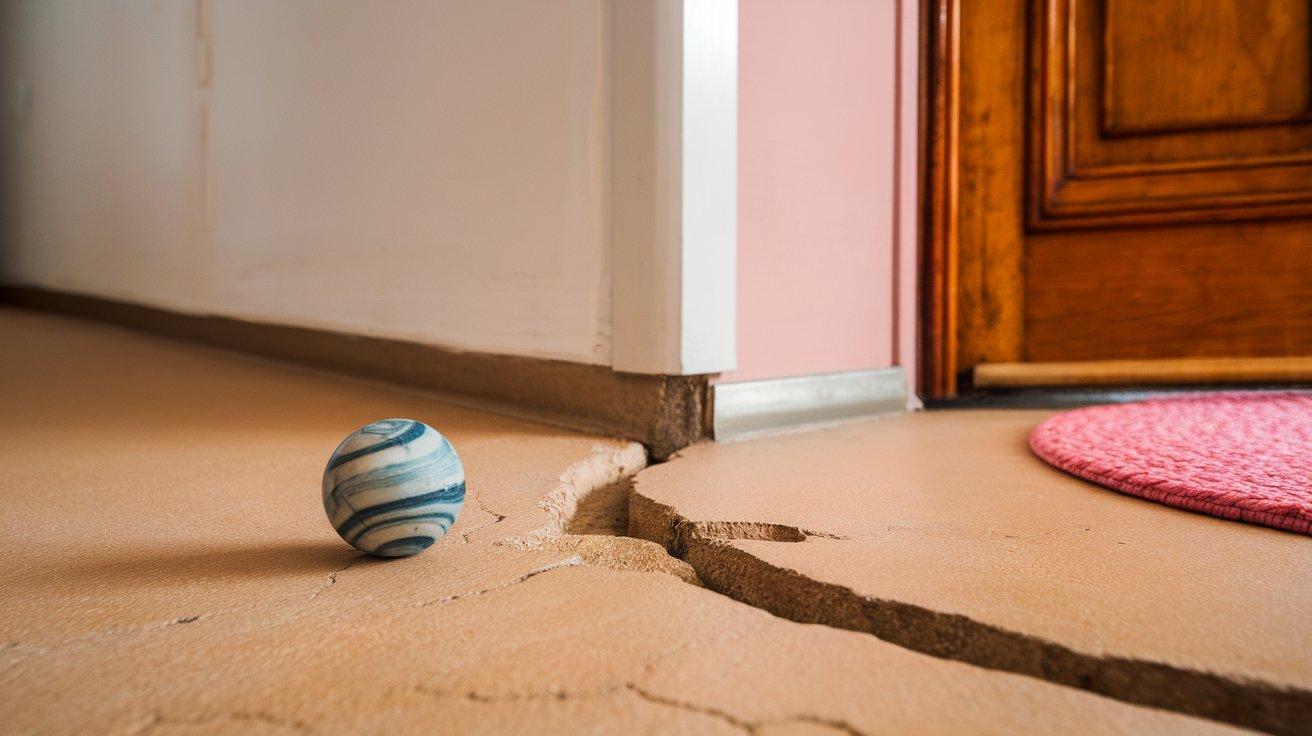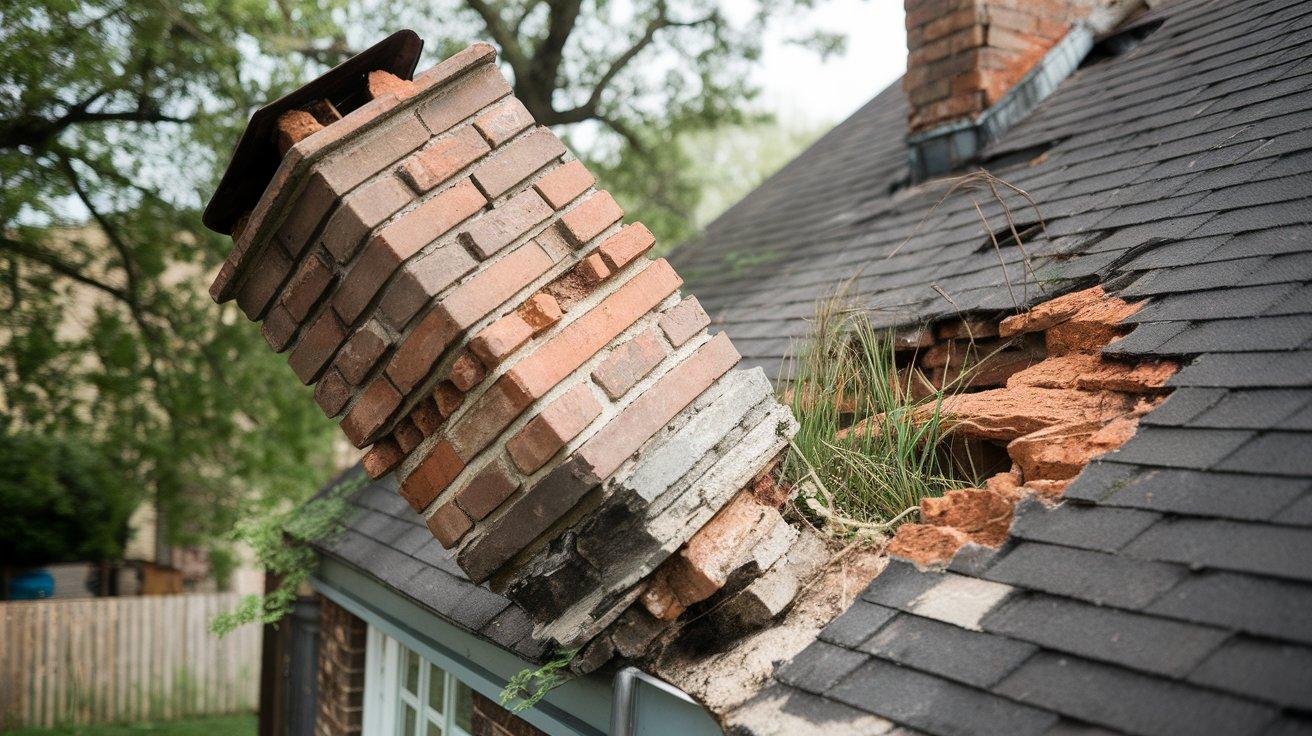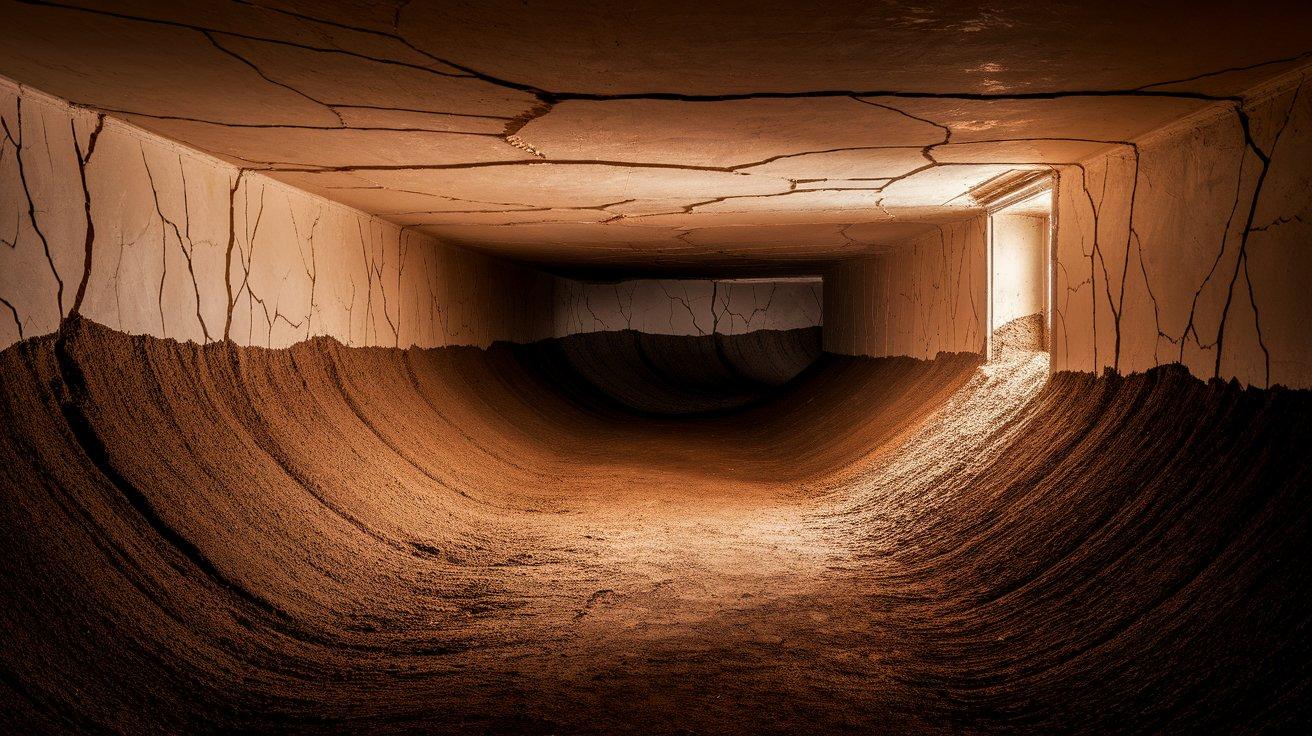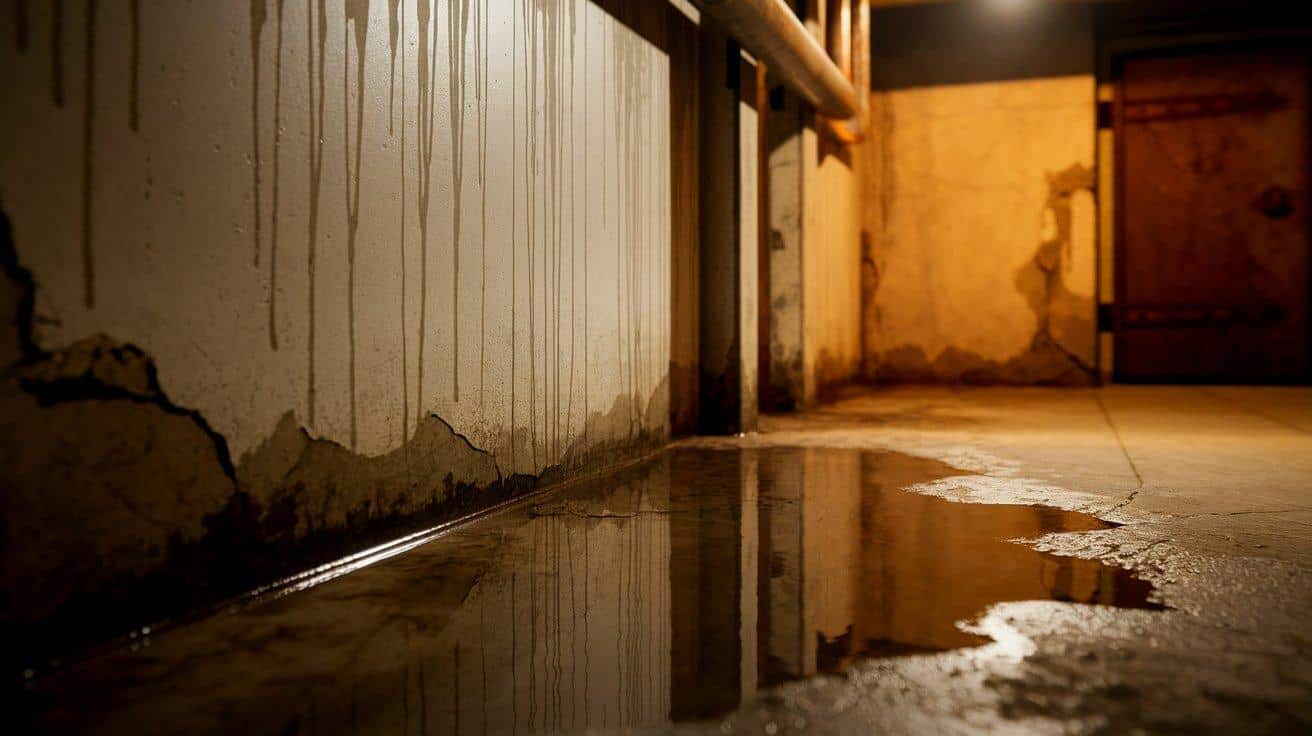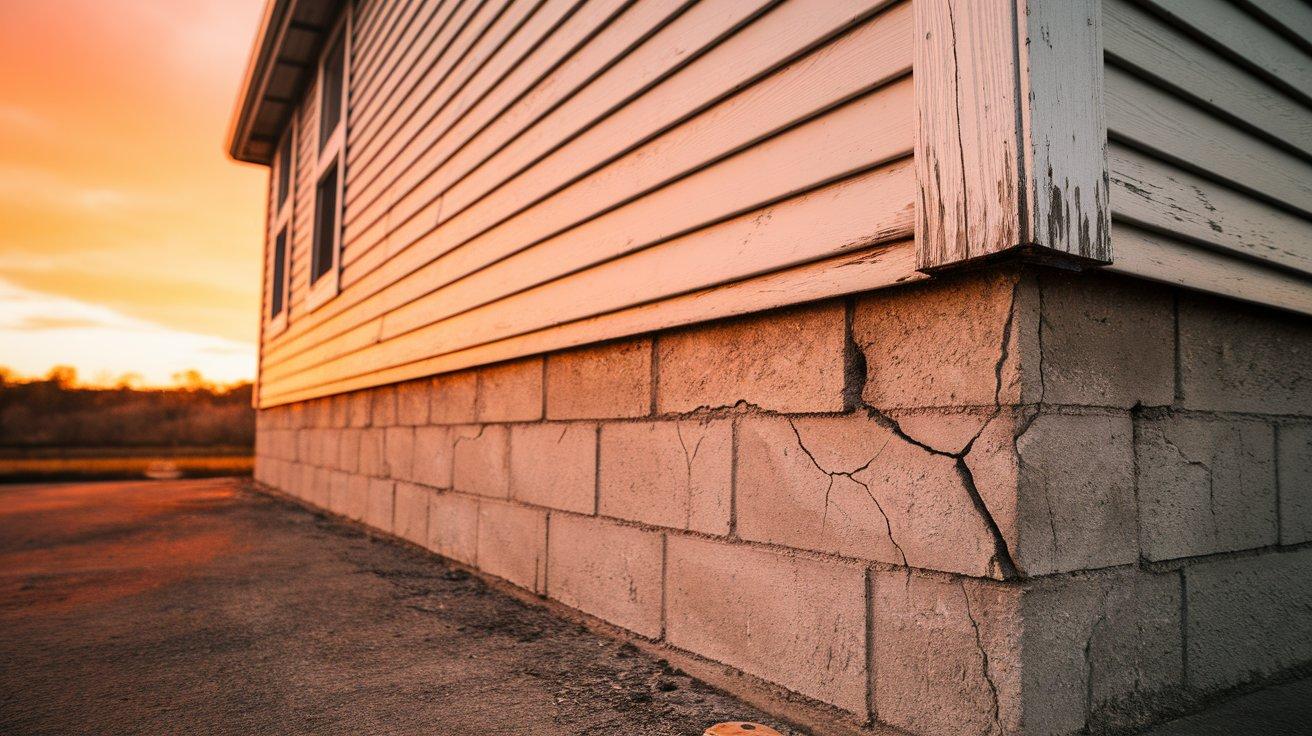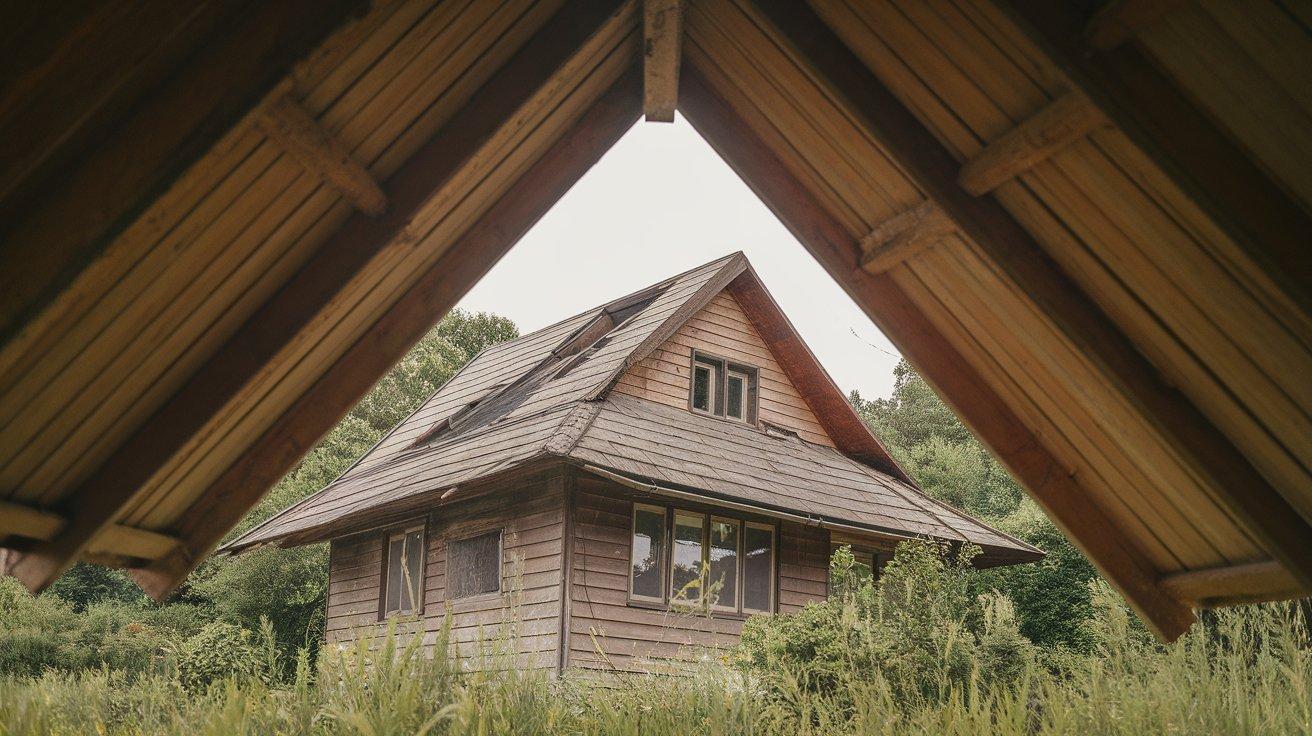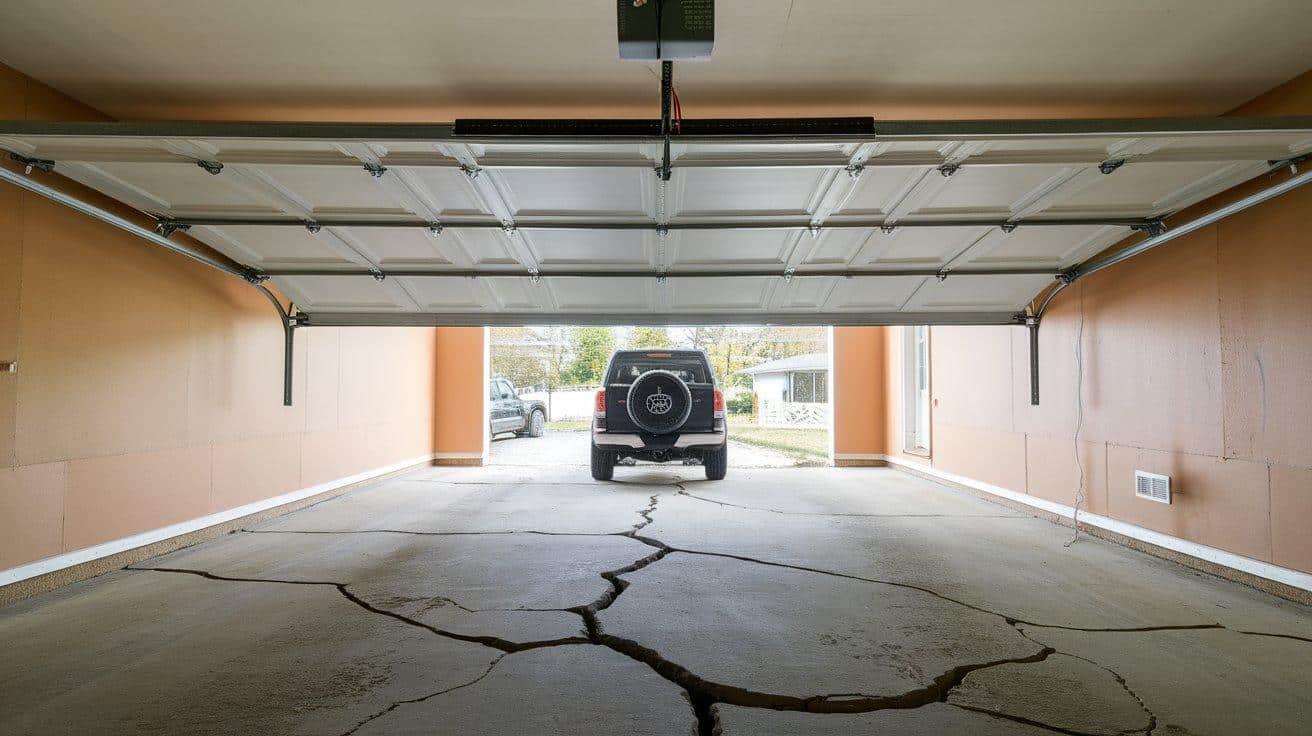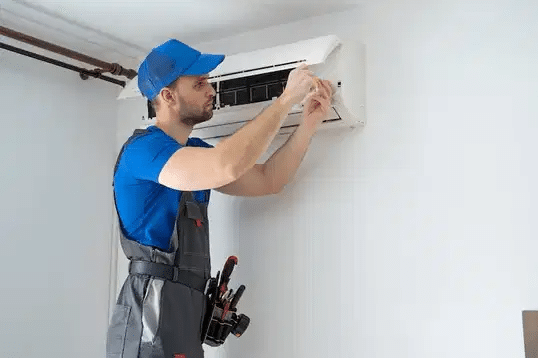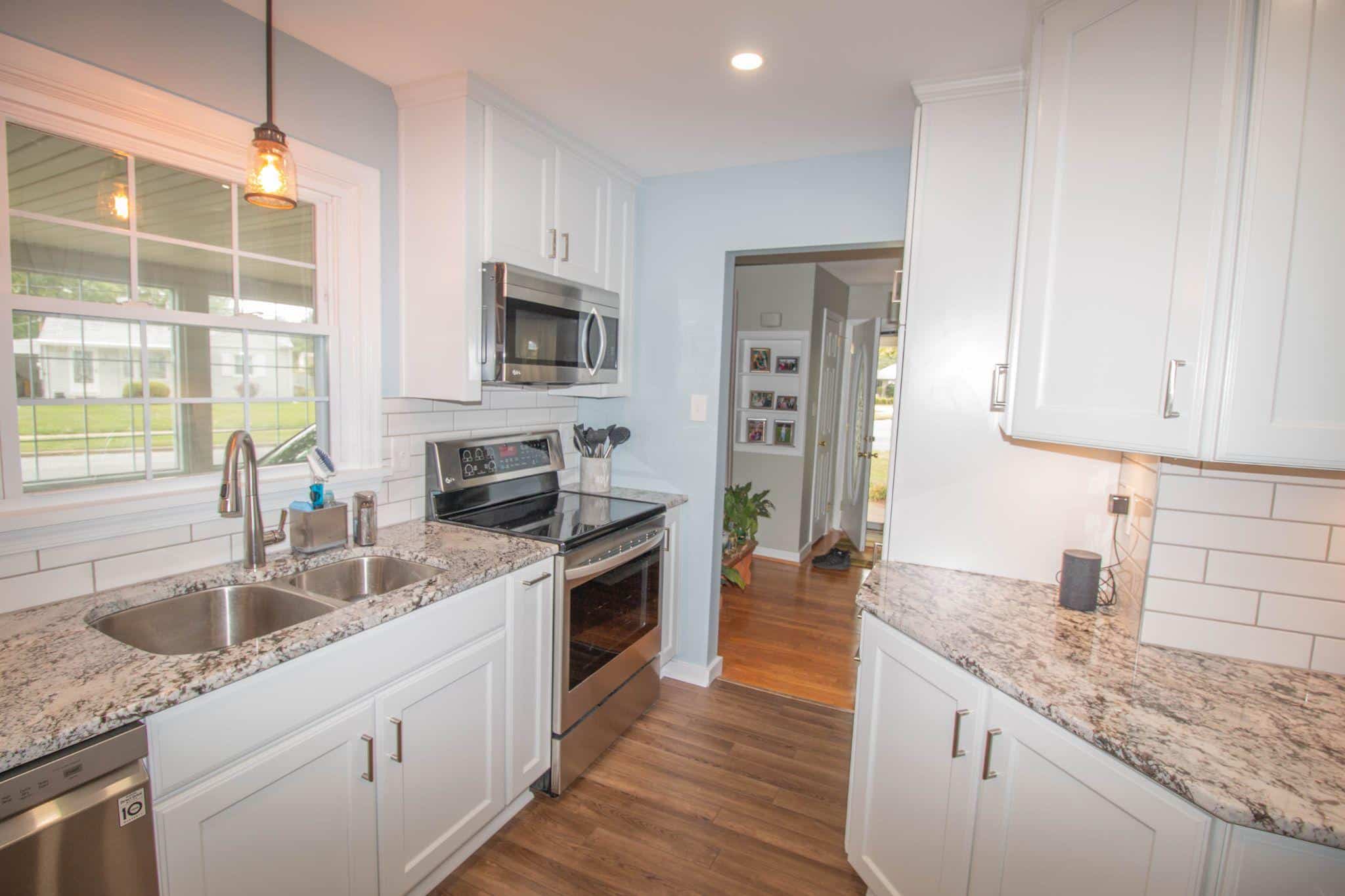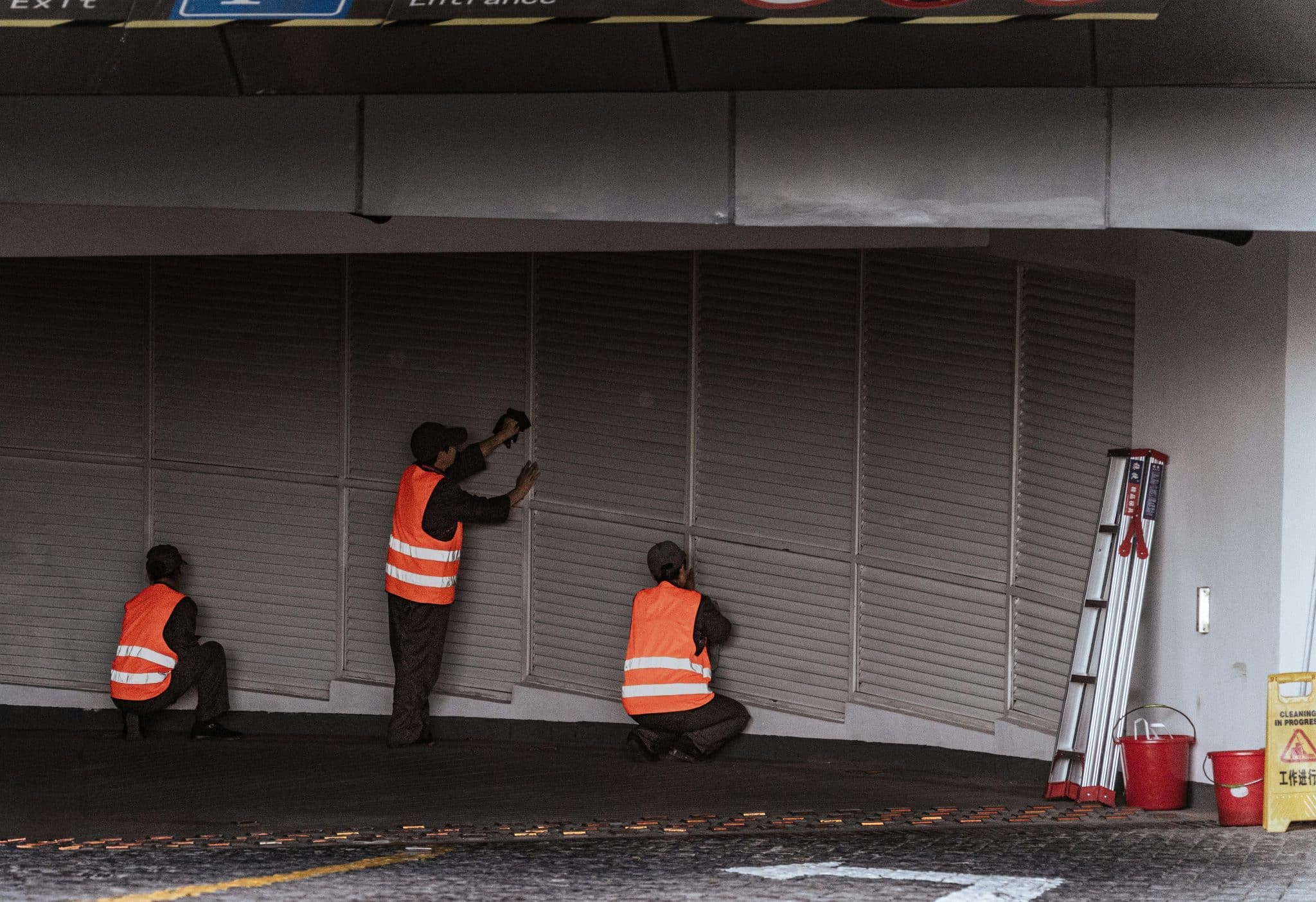Have you noticed cracks appearing along your walls or doors that won’t close properly? These warning signs might point to foundational damage in your home.
Foundation problems affect thousands of homeowners annually. What may start as a small issue can quickly escalate into costly repairs if not addressed.
Many homeowners ignore early symptoms until major structural issues develop. Your home’s foundation bears the weight of your entire house.
When it shifts or settles, every part of your home feels the impact. The foundation connects directly to your home’s stability and safety.
I’ll guide you through the signs, causes, and solutions for foundational damage. By the end, you’ll know exactly what to watch for and how to protect your biggest investment from serious structural problems.
What Is Foundational Damage?
Foundational damage refers to structural issues that affect your home’s foundation and base support system. This damage occurs when the concrete, stone, or block foundation develops cracks, shifts, or settles unevenly.
The foundation supports your entire house’s weight. When it weakens, the damage spreads upward through walls, floors, and ceilings. Small foundation cracks can expand over time.
Common types of foundation problems include:
- Horizontal and vertical cracks in foundation walls
- Bowing or bulging basement walls
- Uneven settling that creates sloped floors
- Separation between the foundation and the house frame
Foundation issues can range from minor cosmetic concerns to severe structural problems. Minor cracks might only affect appearance. Significant damage can make your home unsafe to live in.
The severity of the problem depends on crack size, location, and growth rate. Hairline cracks under 1/8 inch are typically minor, while cracks over 1/4 inch require professional attention.
Why Does This Damage Happen?
Foundation issues occur when your home’s base support system faces pressure or instability. Several common factors contribute to these problems.
- Soil Movement: Clay soil expands when wet and shrinks when dry. This constant movement puts stress on foundation walls and creates cracks.
- Water Problems: Poor drainage lets water collect around foundations. This softens soil and creates pressure that can crack or shift foundation walls.
- Weather Changes: Freeze-thaw cycles crack concrete when water freezes and expands. Hot weather makes materials expand and contract, weakening foundations over time.
- Construction Issues: Some builders use poor materials or skip waterproofing steps. Shallow foundations for soil type create settling problems that worsen over time.
- Tree Root Damage: Large trees near homes absorb moisture from the soil around foundations. This creates uneven soil conditions that cause foundation shifting.
11 Signs of Foundation Damage in Your Home
Recognizing foundation damage early saves money and prevents bigger problems. Watch for these warning signs throughout your home.
1. Cracks in Foundation Walls
Check your basement or crawl space walls for cracks regularly. Horizontal cracks are more serious than vertical ones.
Cracks wider than 1/4 inch need immediate attention from professionals. Small hairline cracks might be normal settling, but growing cracks indicate foundation problems.
2. Sticking Doors and Windows
Doors and windows that suddenly stick or won’t close properly signal foundation movement. The house frame shifts when foundations settle unevenly.
You might notice gaps around door frames or windows that won’t stay open. This problem often gets worse during wet or dry seasons.
3. Uneven or Sloping Floors
Use a marble or ball to test if your floors slope in any direction. Sagging floors indicate foundation settling underneath.
You might feel like you’re walking uphill or downhill inside your home. Hardwood floors may develop gaps between boards when foundations shift.
4. Cracks in Interior Walls
Look for cracks near doors, windows, and room corners. Diagonal cracks running from the corners of doors and windows are warning signs.
Stair-step cracks in brick or block walls indicate serious foundation movement. Small nail pops in drywall can also signal foundation shifting.
5. Gaps Around Trim and Molding
Baseboards and crown molding separate from walls when foundations move. You’ll notice gaps where trim meets walls or ceilings.
Cabinet doors might not align properly with frames. These gaps often appear gradually as foundation problems worsen.
6. Chimney Separation
Check for gaps between your chimney and house exterior walls. A leaning or tilting chimney indicates serious foundation problems.
Cracks in chimney bricks or mortar joints are warning signs. The chimney might pull away from the house as foundations settle differently.
7. Bowing Basement Walls
Basement walls that bulge inward show soil pressure problems outside. You might see horizontal cracks along with the bowing.
This problem gets worse during wet seasons when the soil expands. Bowing walls can eventually collapse if not repaired quickly.
8. Water in Basement
New water problems in your basement often indicate foundation cracks. You might notice damp spots on walls or floors.
Musty odors can develop from moisture entering through foundation cracks. Water stains on the basement walls show where water has entered before.
9. Exterior Foundation Cracks
Walk around your home and inspect the foundation from the outside. Look for cracks in concrete or block foundations.
Check where the foundation meets the house siding above. Cracks that you can fit a coin into need professional inspection.
10. Sagging or Uneven Roofline
Step back and look at your roofline from different angles. A sagging or wavy roofline indicates serious structural problems below.
The roof might dip in certain areas or look uneven. This problem often accompanies other foundation damage signs.
11. Gaps Around Garage Doors
Check for gaps between your garage door and the frame. The garage floor might crack or separate from the foundation.
Garage doors that won’t close properly can indicate foundation settling. You might notice the garage pulling away from the main house.
Can Foundational Damage Be Prevented?
Yes, preventing foundation problems is possible with proper maintenance and care. Most foundation problems develop slowly over time, giving you the opportunity to address them early.
Prevention is often more effective than expensive repairs later. Simple steps like proper drainage and regular inspections can save thousands of dollars. Taking care of your foundation protects your entire home investment.
Some factors, like soil type and weather, you cannot control. However, you can manage water around your foundation and maintain proper grading. Regular maintenance catches small problems before they become major repairs.
The key is staying ahead of potential issues. Watch for early warning signs and address problems quickly. Professional inspections every few years help identify risks before damage occurs.
How Much Does It Cost to Repair Foundation Damage?
Foundation repair costs vary widely depending on the type and severity of damage. Getting quotes from multiple contractors helps you understand the real costs for your specific situation.
| Repair Type | Cost Range | Description |
|---|---|---|
| Small Crack Sealing | $300 – $800 | Minor cracks under 1/4 inch wide |
| Foundation Waterproofing | $2,000 – $6,000 | Sealing and moisture protection |
| Slab Jacking | $500 – $1,500 | Lifting sunken concrete slabs |
| Pier Installation | $10,000 – $30,000 | Steel or concrete support piers |
| Basement Wall Repair | $15,000 – $50,000 | Replacing damaged basement walls |
| Full Foundation Replacement | $40,000 – $100,000+ | Complete foundation rebuild |
Factors affecting costs include:
- Home size and foundation area
- Soil conditions and accessibility
- Geographic location and labor rates
- Extent of damage and repair method needed
Should You DIY or Hire a Professional for Foundation Repairs?
Foundation repairs require specialized knowledge and equipment that most homeowners don’t have. The decision depends on the severity of damage and safety concerns.
| Repair Type | DIY | Professional | Why |
|---|---|---|---|
| Small cracks (under 1/8 inch) | ✓ | – | Simple sealing with caulk or cement |
| Large cracks (over 1/4 inch) | – | ✓ | Requires structural assessment |
| Horizontal cracks | – | ✓ | Indicates serious structural problems |
| Bowing walls | – | ✓ | Safety risk, needs specialized equipment. |
| Foundation settling | – | ✓ | Complex repair with permits required |
| Water seepage | ✓ | ✓ | Minor DIY, primary needs professional |
| Pier installation | – | ✓ | Heavy equipment and engineering are needed. |
Consider these factors:
- Safety first: Structural damage can be dangerous
- Insurance requirements: Claims often need professional work
- Warranties: Professionals provide guarantees on repairs
- Cost: DIY mistakes can make repairs more expensive later
What Are the Risks of Ignoring Foundational Damage?
Ignoring these issues leads to serious consequences that worsen and become more costly over time. Minor problems can develop into significant structural failures if not addressed.
- Structural Safety Risks: Foundation problems can make your home unsafe to live in. Severe settling can cause walls to collapse or floors to cave in. The entire house structure becomes unstable when the foundations fail completely.
- Property Value Loss: Homes with foundation problems lose significant market value quickly. Buyers often avoid houses with visible foundation damage completely. You might lose $20,000 to $50,000 in home value from foundation problems.
- Increasing Repair Costs: Small foundation cracks that cost $500 to fix can become $15,000 repairs later. Water damage from foundation leaks creates mold and rot problems. Emergency repairs always cost more than planned maintenance and fixes.
- Health Hazards: Foundation leaks create moisture problems that lead to mold growth. Mold can cause respiratory problems and allergic reactions in your family. Uneven floors become trip hazards for family members.
- Insurance Issues: Many insurance companies won’t cover foundation damage that develops over time. Homeowner’s insurance typically excludes gradual foundation problems from coverage. Selling your home becomes difficult without disclosing foundation issues to buyers.
Conclusion
Have foundation problems been keeping you awake at night? Now you know exactly what to look for and how to protect your home.
Foundation damage starts small but grows into expensive problems without proper attention. These warning signs help you catch issues early when repairs cost less.
Prevention through proper drainage and maintenance saves thousands compared to major repairs later. Professional help makes sense for serious foundation problems.
Minor cracks you can seal yourself, but structural issues need expert assessment. The cost of ignoring foundation damage far exceeds the investment in timely repairs.
What signs have you noticed around your home? Share your experiences in the comments below, or let us know if you have questions about foundation problems we didn’t cover here.
Frequently Asked Questions
Will Insurance Pay for Foundation Damage?
Home insurance covers foundation damage from sudden events like storms or vehicle impacts. Gradual settling damage usually isn’t covered by standard policies.
What if I Can’t Afford Foundation Repair?
Home equity loans or lines of credit help finance foundation repairs. Get multiple quotes and consider payment plans for expensive repairs.
Do I Have to Move Out for Foundation Repair?
You won’t need to leave your home during most foundation repairs. Expect some noise from equipment, but families typically stay home.

